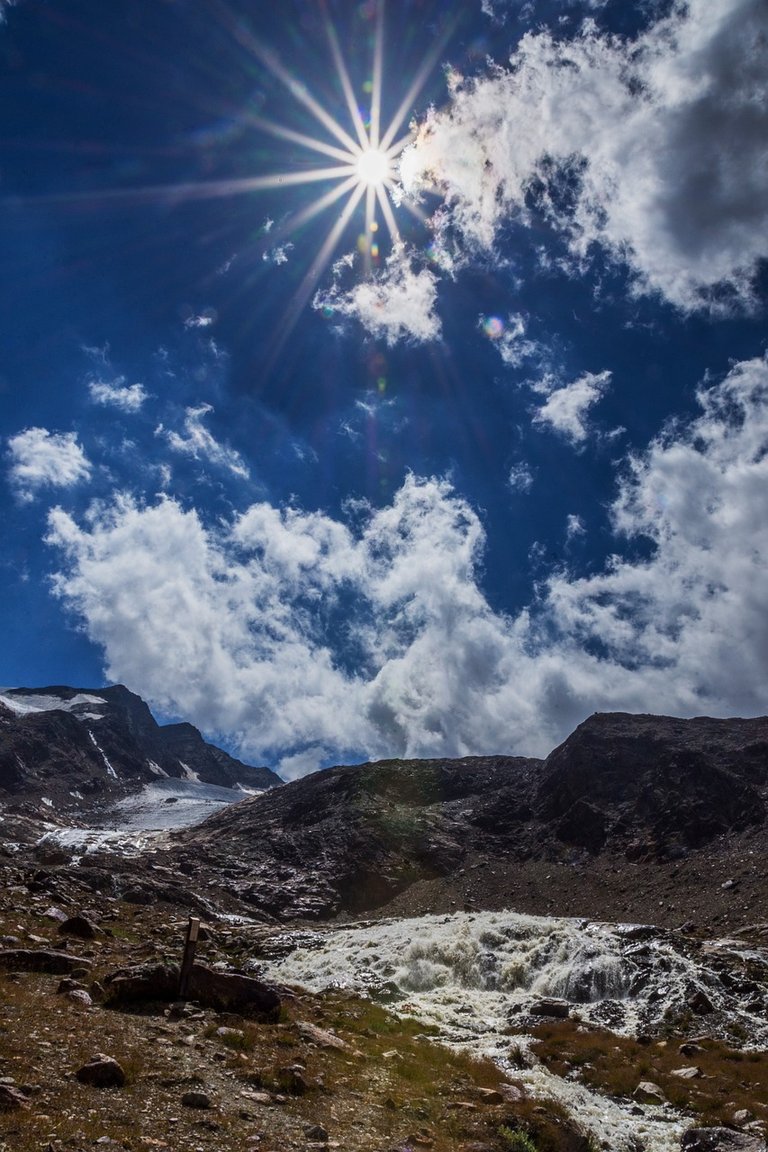The choreographer in water cycle as a dual-edged sword
In the complicated style of the water cycle, the sun's light energy is the main conductor, controlling the beats and movements that keep life going on Earth. As you look up at this amazing show of stars, you become more aware of how important the sun is in controlling the complex dance of evaporation, condensation, and precipitation.
Under the sun's watchful eye, the watery substances on the Earth's surface go through a change, turning into mist, a gaseous state. This is made easier by the natural process of evaporation. The hydrosphere, which includes seas, lakes, and rivers, adds to the moisture in the air by sending vaporous tendrils up into the sky and blending in with the dance of the stars. As a bright star in the sky, the sun gives its energy to water molecules, pushing them to rise and join the complex dance of the atmosphere.
It is the cooling and condensation of the water vapors that cause clouds to form as they rise. It's possible to think of these clouds as a collection of drops in the sky. The "ethereal display" being talked about is a natural event that is closely connected to the sun's rays. It gets things ready for the next step in the water cycle. The cumulus clouds, with their huge, impressive size, have the ability to release water from the atmosphere.
In response to energy from the sun, the Earth experiences precipitation, which can look like rain, snow, sleet, or hail. The sun is more than just a witness in this event; it is the main force that keeps the water cycle going. Through the ebb and flow of water bodies, the insatiable hunger for food that all living things have is satisfied. This creates healthy ecosystems and keeps our Heavenly Home in good health generally.
As the cycle comes to a close, the water element returns to Earth, making its way through river systems, bodies of freshwater, and large expanses of saltwater. It is now ready to start the next part of this celestial show. Solar radiation, which is a constant and bright force, sets off the complicated dance that shapes the water cycle, which is an important part of Earth's vast, linked system.
Let's talk about some of the ways that this solar radiation could affect on the other side:
The water cycle and solar radiation work together in a complex way that creates a delicate balance. Any change can set off a chain of linked effects. In addition to being a key part of what drives the hydrological cycle, solar energy also increases the chances of asymmetry and unusual events happening.
When the sun's radiation rises, the process of evaporation speeds up, which has a big effect on the general makeup. Increasing the amount of water vapor in the air can be good for the environment, but it can also make droughts worse in some places. Rising temperatures and more sunlight could lead to more evaporation, which could dry out land and put stress on water sources.
However, it is important to remember that the effect of solar radiation is growing, which is why extreme weather events are getting worse. There is more energy in the atmosphere, which could lead to more storms, unpredictable patterns of rainfall, and even catastrophic floods in some cases. Within the given parameters, solar radiation plays a multifaceted part, affecting the formation of both dry and wet land.
The effects of more solar radiation show how complicated the balance is between Earth's processes. It is important to stress the importance of solar radiation when talking about changes in climate trends so that we can understand the big effects that happen in many places. When I see this, it makes me think of how closely heavenly forces and the delicate balance of our planet's ecosystems are linked.
References:
- https://serc.carleton.edu/eslabs/weather/2a.html
- https://www.britannica.com/science/water-cycle
- https://www.noaa.gov/education/resource-collections/freshwater/water-cycle
- https://en.m.wikipedia.org/wiki/Water_cycle
-https://www.labxchange.org/library/items/lb:LabXchange:81ba4696:html:1?gclid=CjwKCAiAu9yqBhBmEiwAHTx5p7DS6pw9dLSDIs1m8oGJFnGRbQW8bZXIG0ZBnUnhjv5sSNYda21GthoCqaoQAvD_BwE
